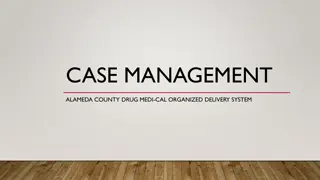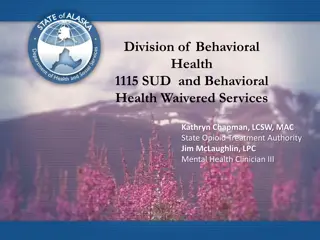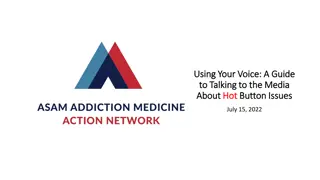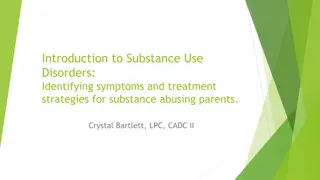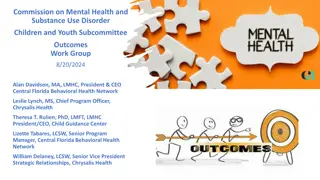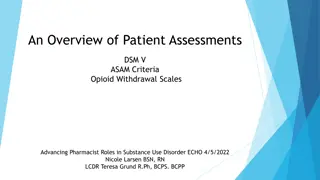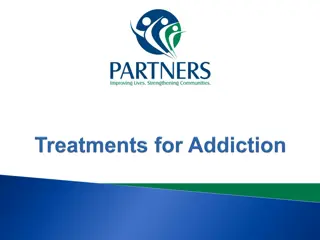
Understanding Responsibilities and Liabilities in Ordering and Prescribing Practices
Learn about the risks and best practices related to ordering and prescribing in healthcare. Explore potential problems, federal health care laws, fraud prevention partnerships, and task force examples. Understand the legal aspects and implications of prescribing and ordering responsibilities.
Download Presentation

Please find below an Image/Link to download the presentation.
The content on the website is provided AS IS for your information and personal use only. It may not be sold, licensed, or shared on other websites without obtaining consent from the author. If you encounter any issues during the download, it is possible that the publisher has removed the file from their server.
You are allowed to download the files provided on this website for personal or commercial use, subject to the condition that they are used lawfully. All files are the property of their respective owners.
The content on the website is provided AS IS for your information and personal use only. It may not be sold, licensed, or shared on other websites without obtaining consent from the author.
E N D
Presentation Transcript
Ordering and Prescribing Your Responsibilities and Liabilities Kelly J. Clark, MD, MBA Michael C. Barnes, Esq. July 10, 2024
REVIEW OF OBJECTIVES At the conclusion of this session, participants will be able to: Identify areas of elevated risk in their prescribing/ordering practices Assess the underlying principles and any need for further information on mitigating the risks related to prescribing/ordering in their practices TITLE Locate the resources they require to better manage their prescribing/ordering related risk *Disclaimer: The statements made as part of the presentation are provided for educational purposes only. They do not constitute legal advice nor do they necessarily reflect the views of ASAM. If you have specific questions as to the application of law to your activities, you should seek the advice of your legal counsel.
Disclosures Disclosures: None
Potential Problems Administrative State license DEA registration Insurer recoupments Civil complaints Negligence, wrongful death (physicians and programs) Federal (e.g., conspiracy to defraud the U.S.) State (e.g., Medicaid overpayments) Criminal charges Federal State page 05
Federal Health Care Laws Eliminating Kickbacks in Recovery Act For services covered by a health care benefit program affecting interstate commerce Solicits, receives, offers, or pays remuneration To induce or in exchange for referrals To SUD treatment facility, recovery residence, or clinical laboratory False Claims Act Anti-Kickback Statute Criminal Health Care Fraud Statute Stark Law Controlled Substances Act Similar state laws
Health Care Fraud Prevention Partnership Federal, state agencies, law enforcement, private health insurance plans, and health care anti-fraud associations Six problematic areas, including: Psychotherapy SUD treatment page 07
Health Care Fraud Task Force examples from report: CEO of Silicon Valley tech company claims to detect allergies and COVID-19 from single drop of blood Trial conviction of 2 defendants in $1.4 rural hospital case (one of largest health care fraud cases ever charged) Convictions at three separate trials between 12/2021 and 6/2022 of sober home operators and doctors responsible for hundreds of millions in loss
Range of Practice Consulting vs. treating physician medical clearance Medical director responsibilities Supervising clinician responsibilities page 09
Medical Necessity Not literal Defined in coverage policies Services or supplies are medically necessary if: Needed for diagnosis or treatment of medical condition Within generally accepted standards of medical care Not solely for convenience of insured or provider Not more costly than alternative service or supply at least as likely to produce equivalent therapeutic or diagnostic results for the specific patient s treatment
Billing Billing for a service is representing that the service is covered and medically necessary under the patient s health plan Who, what, when, where, why, on whom, on whose order/referral How much In-network Out-of-network Only physicians can do medical necessity denials Others can do administrative denials Coverage confirmations and prior authorizations are not promises to pay (e.g., did not provide truthful information to obtain prior authorization) page 011
Billing Problems Excessive charges Lack of documented orders Standing orders/medical clearance Service was not provided At all By appropriate personnel Diagnostic results not utilized for treatment planning Inducements Room and board Fee forgiveness Flights Billing at lower level of care
Example: Review and Recoupment Problems Physician treats high-risk, high-complexity pain and OUD patients UDT consistent with literature and practice recommendations Certified Professional Coder who is also a Registered Nurse conducted review Documentation did not support billing Notes did not provide sufficient information to support the code Unfamiliar with methodologies, purposes, rationale (risk, analytes, frequency), and clinical responses in records Six-figure sum due in 30 days page 013
Example: Drug Testing Claim Problems (when a provider s typical pattern of practice) UDT ordered multiple times per week no matter clinical status Timing of tests cannot support medical necessity Ex. Billing for presumptive tests when related definitive tests were ordered and results reviewed at the same time/before presumptive Definitive testing including clearly medically unnecessary analytes (SSRIs, TCAs) Enormous bills ($1000-$8000 per urine specimen) NO EVIDENCE that the results of testing a specimen were used in the diagnosis and treatment of the patient
Documentation You sign it, you own it Default: if it is not written, it did not happen Read your full progress notes, and do not just copy and paste What are you doing with the information available? Levels of care Not following policy and procedure manuals Psychotherapy notes are separate from E&M notes page 015
Resources and Recommendations Expert in addiction medicine practice, regulations, and billing Legal counsel with health care and addiction medicine experience State and national professional associations State licensing boards Professional Program Malpractice insurance company General liability insurance company HHS OIG Fraud and Abuse Laws for Physicians
ASAM Special Interest Group: Addiction Medicine and the Law Chair: Kelly J. Clark, MD, MBA Vice Chair Timothy J. Wiegand, MD ASAM members join on ASAM website 200+ members page 017
THANK YOU! Q&A and Discussion


